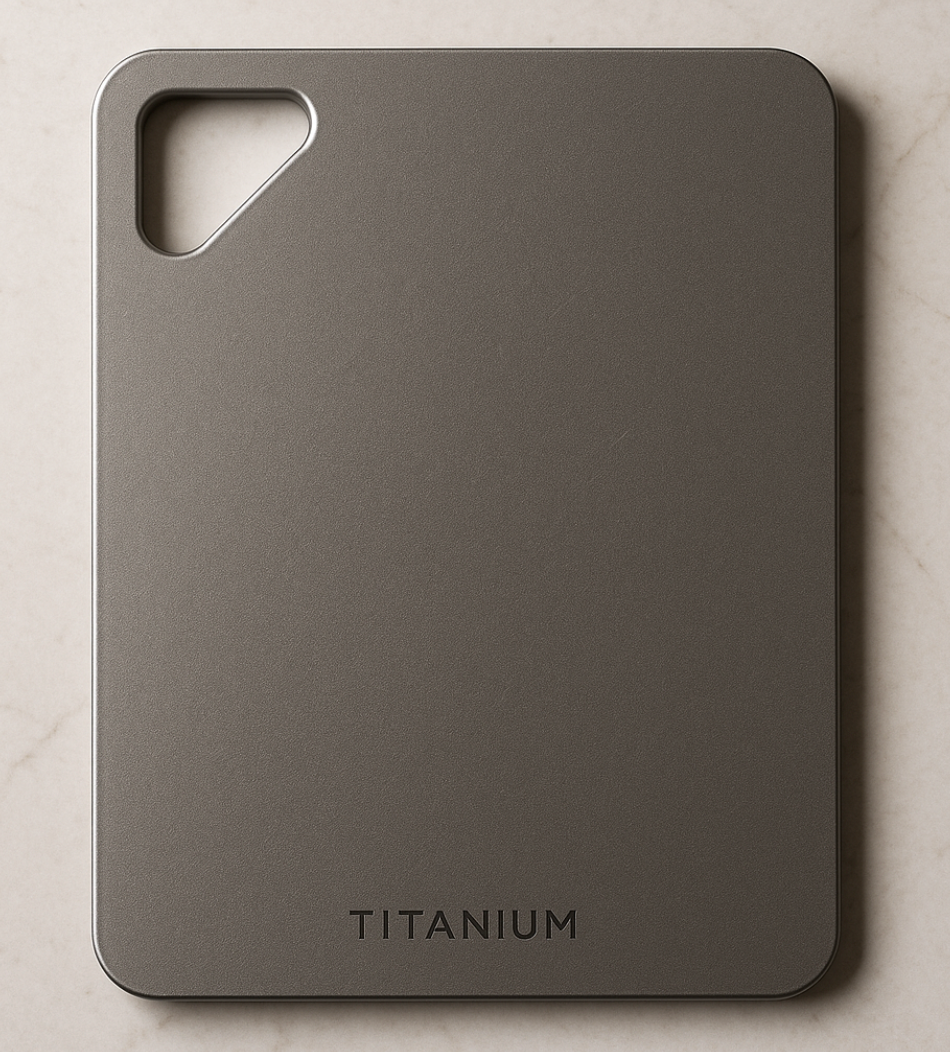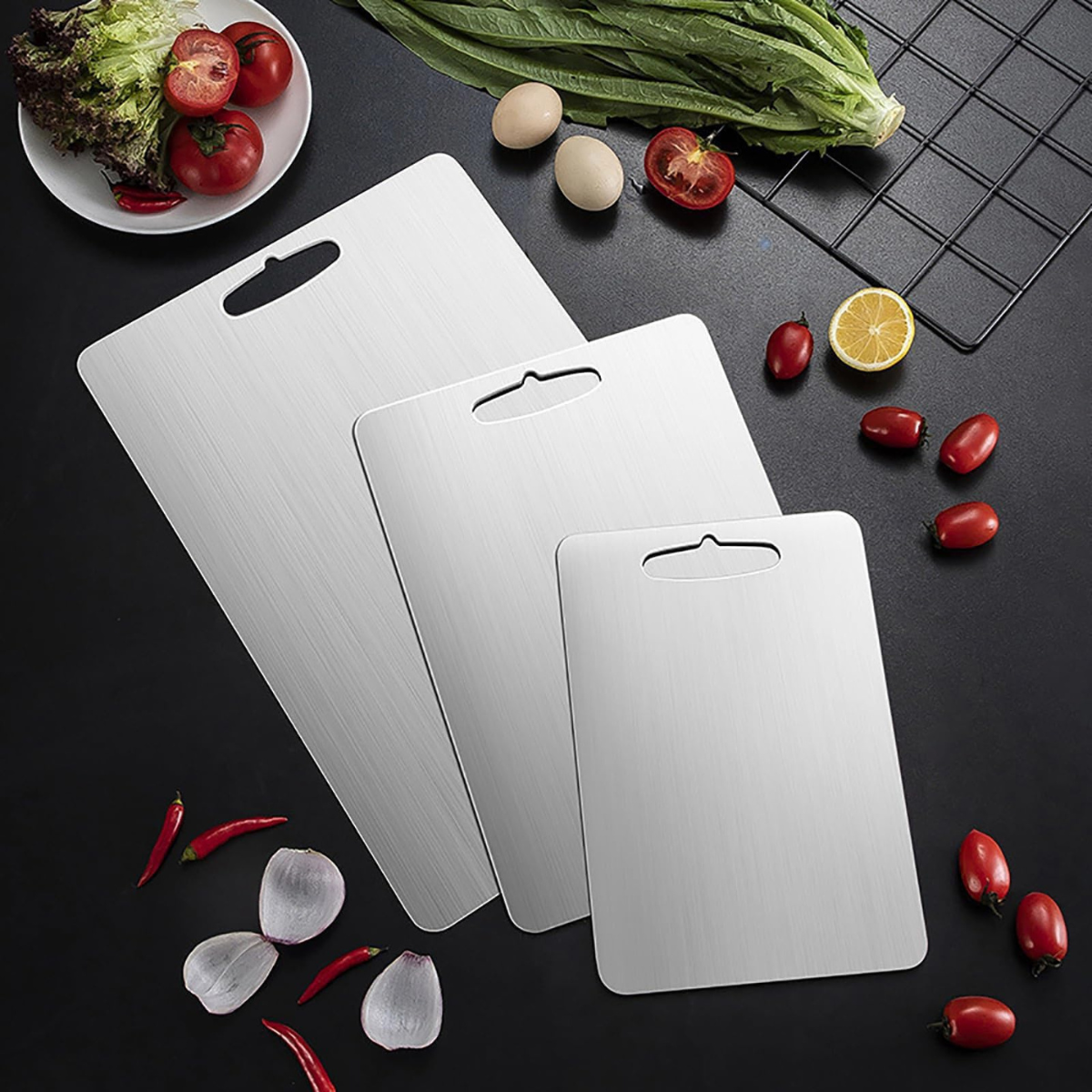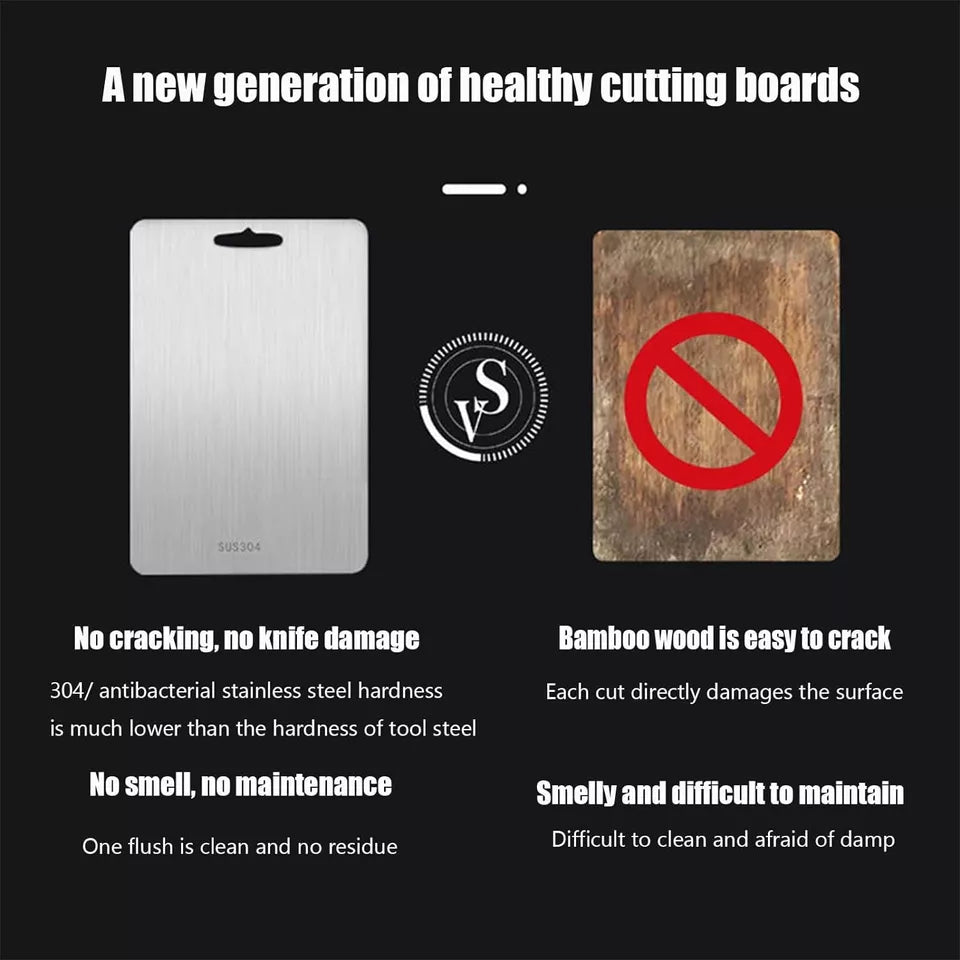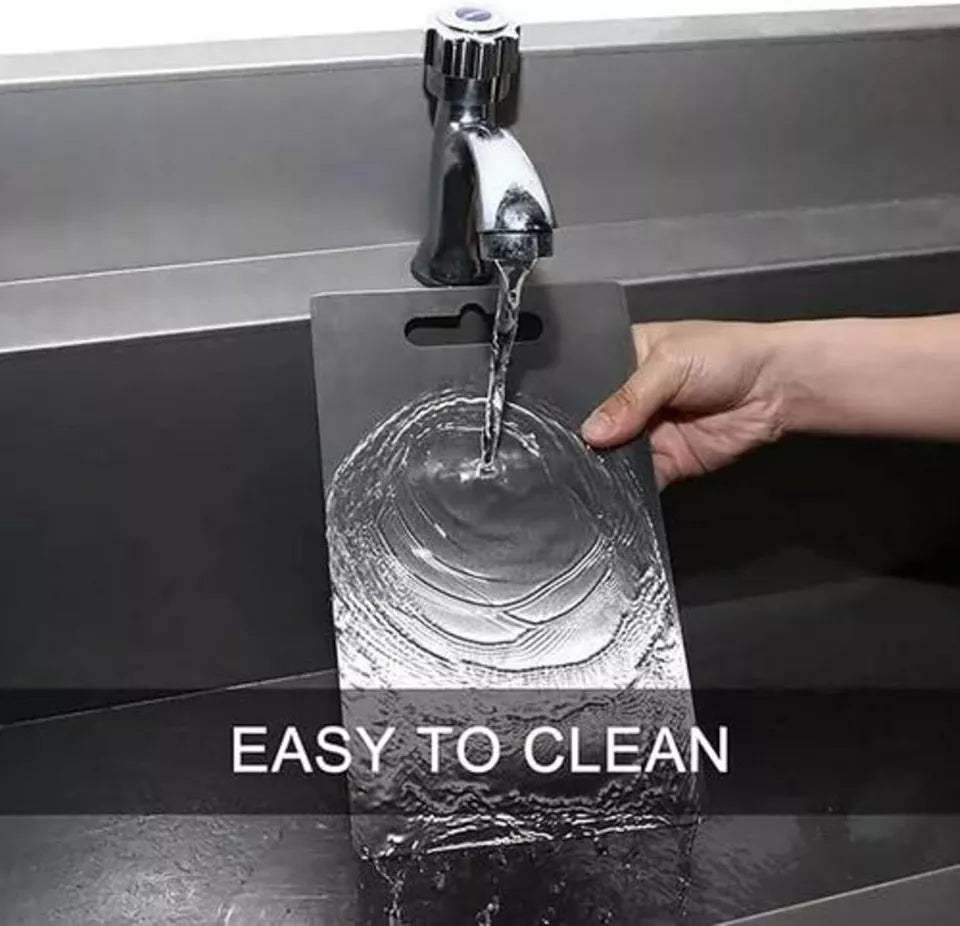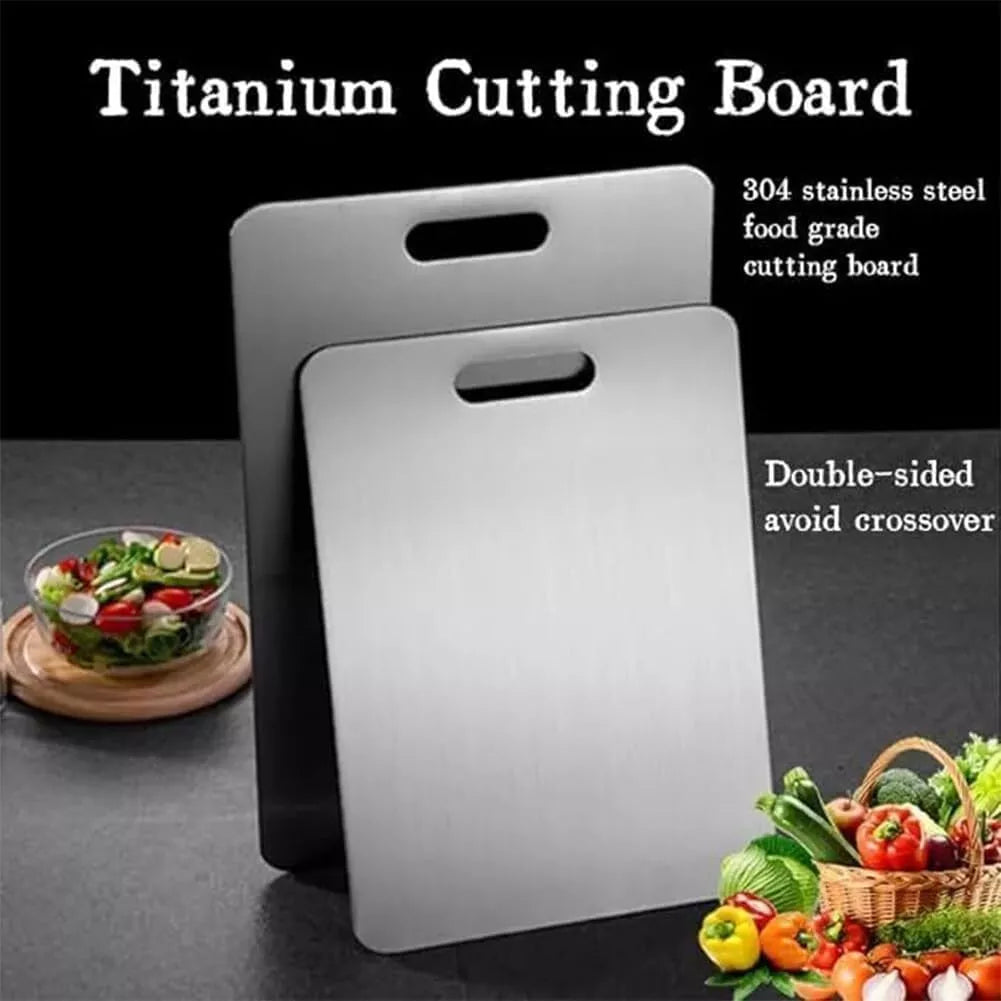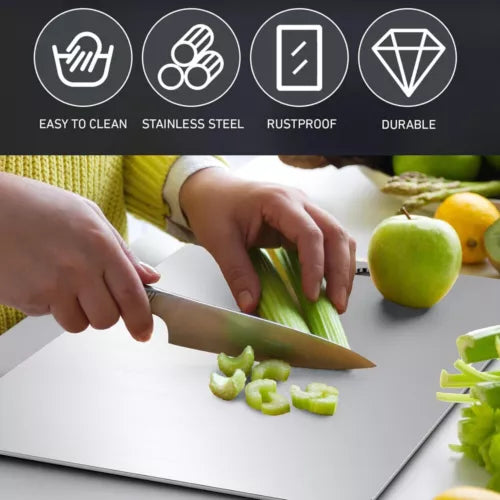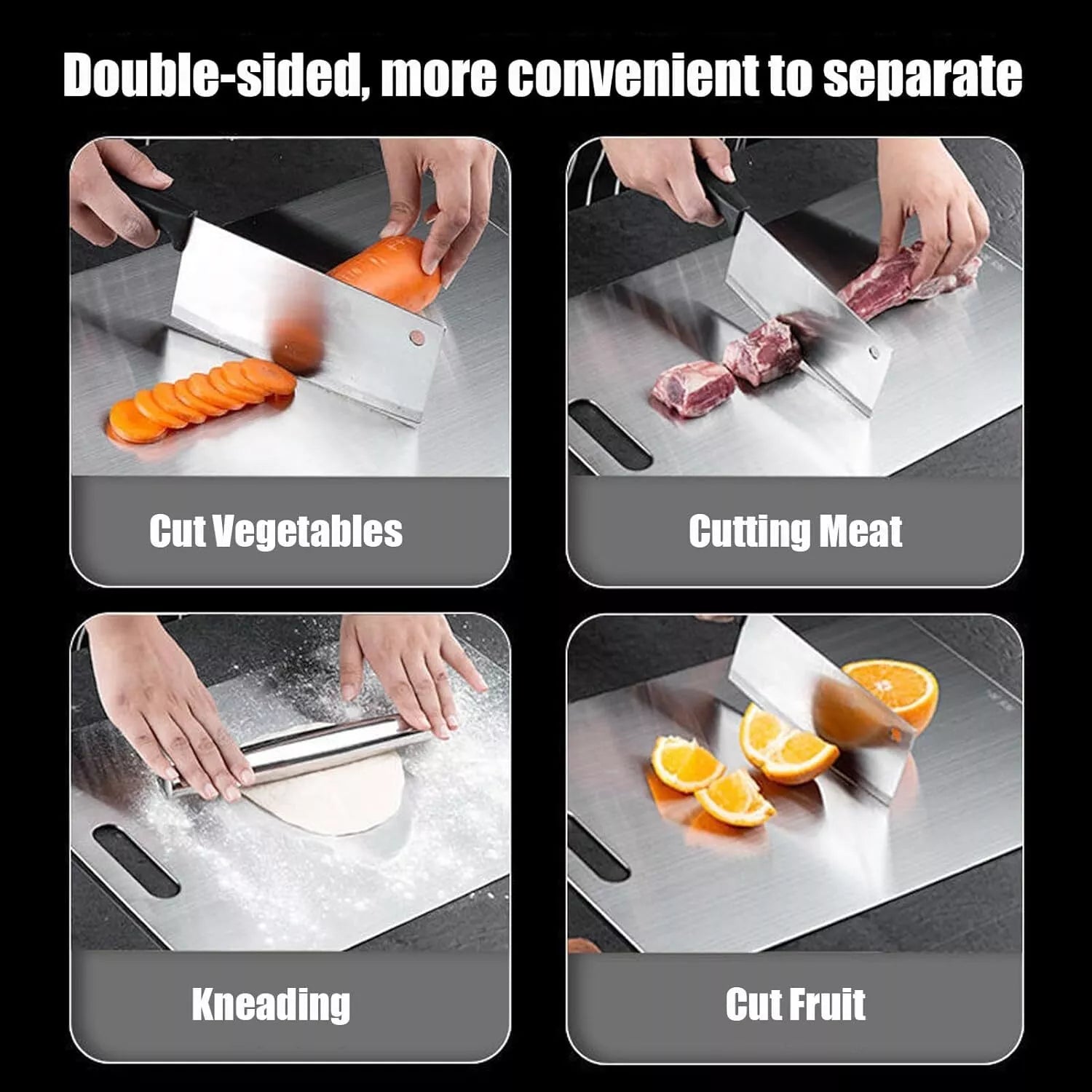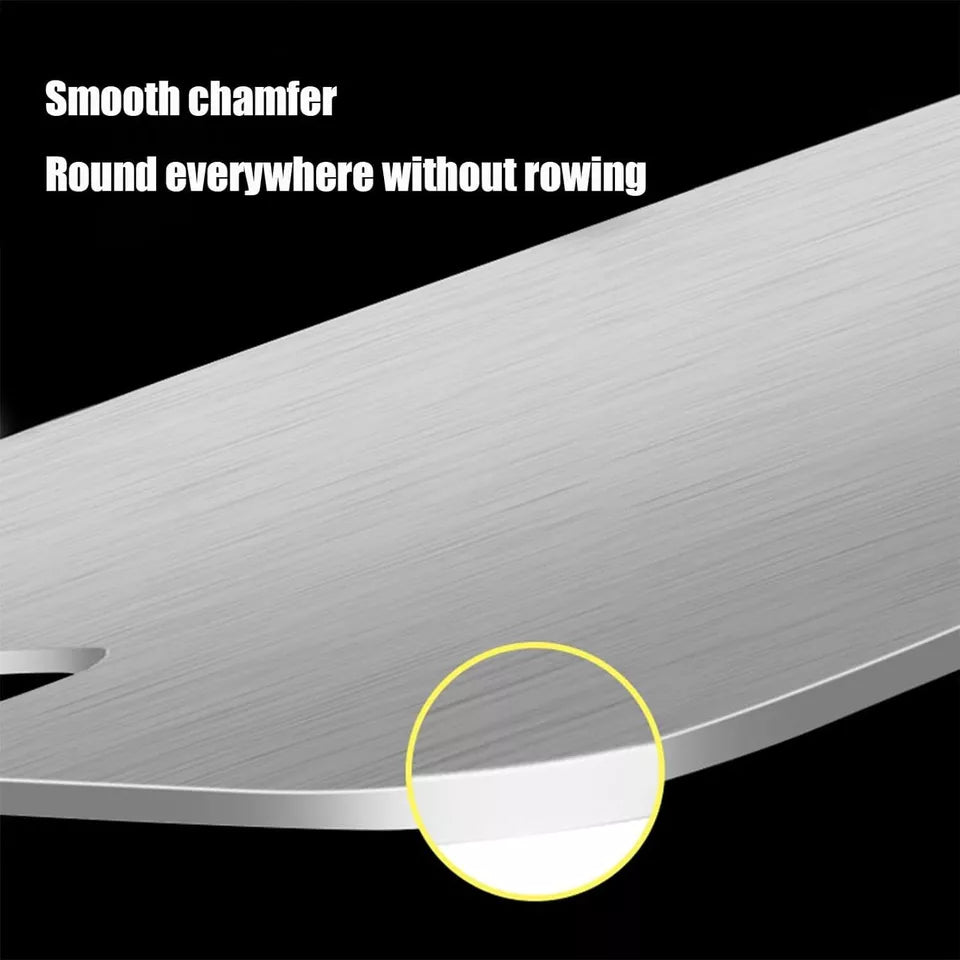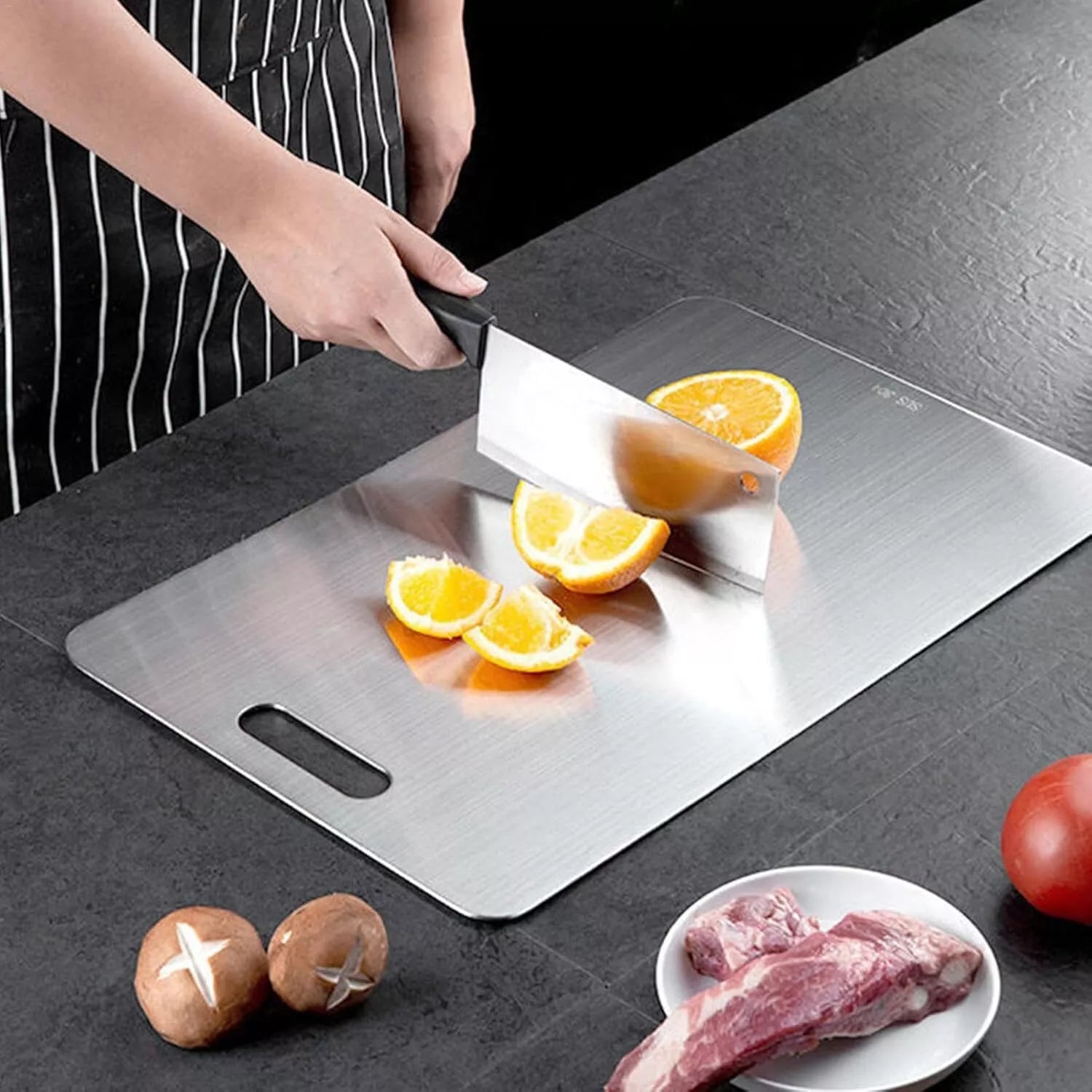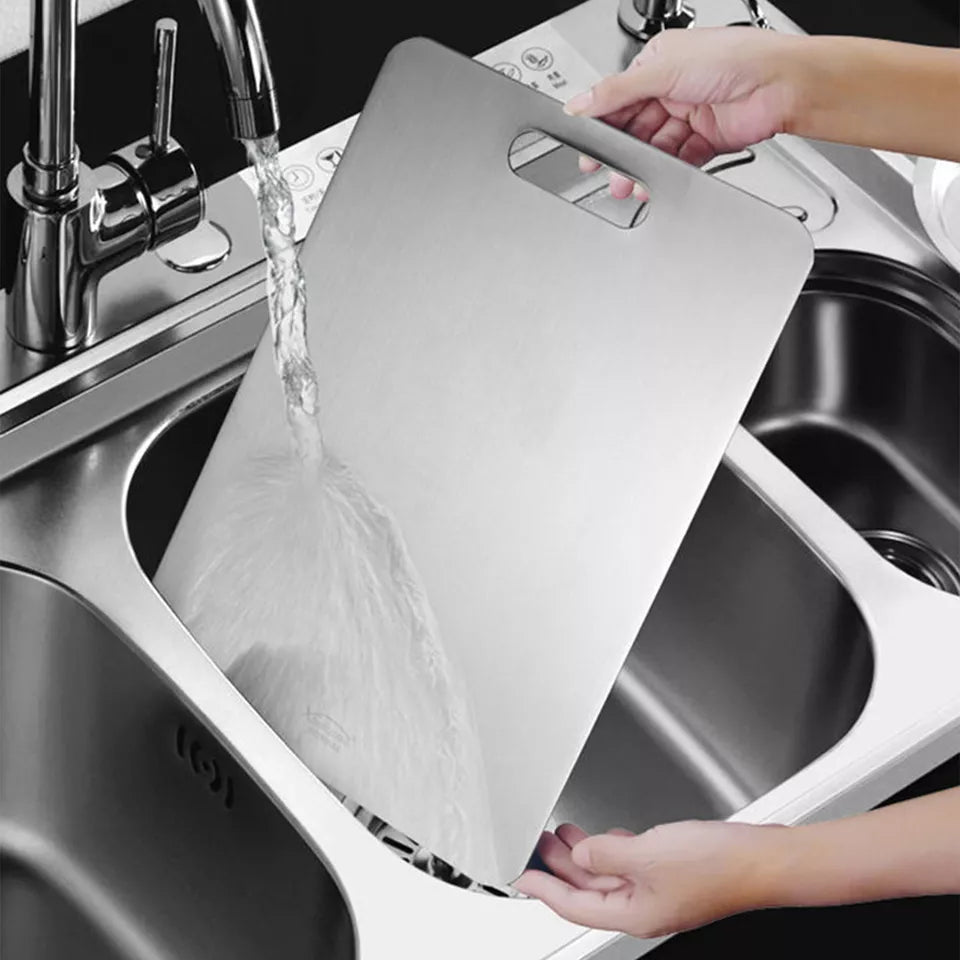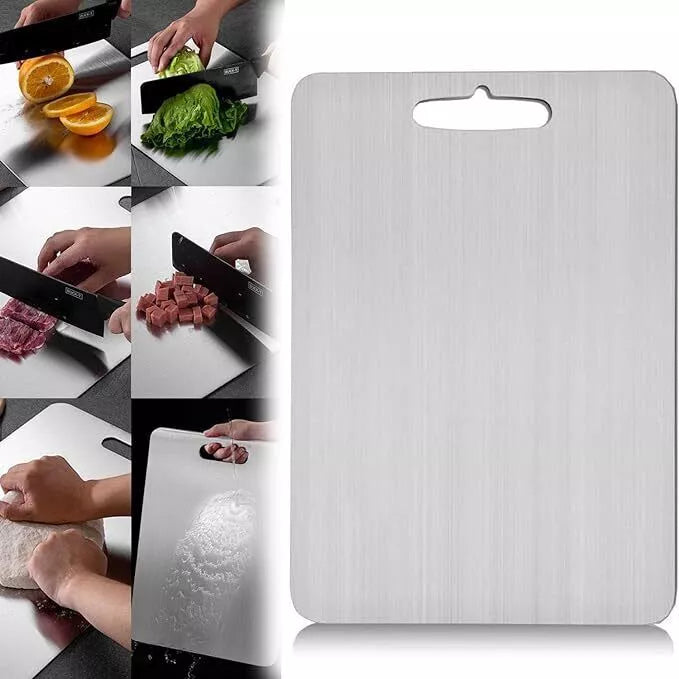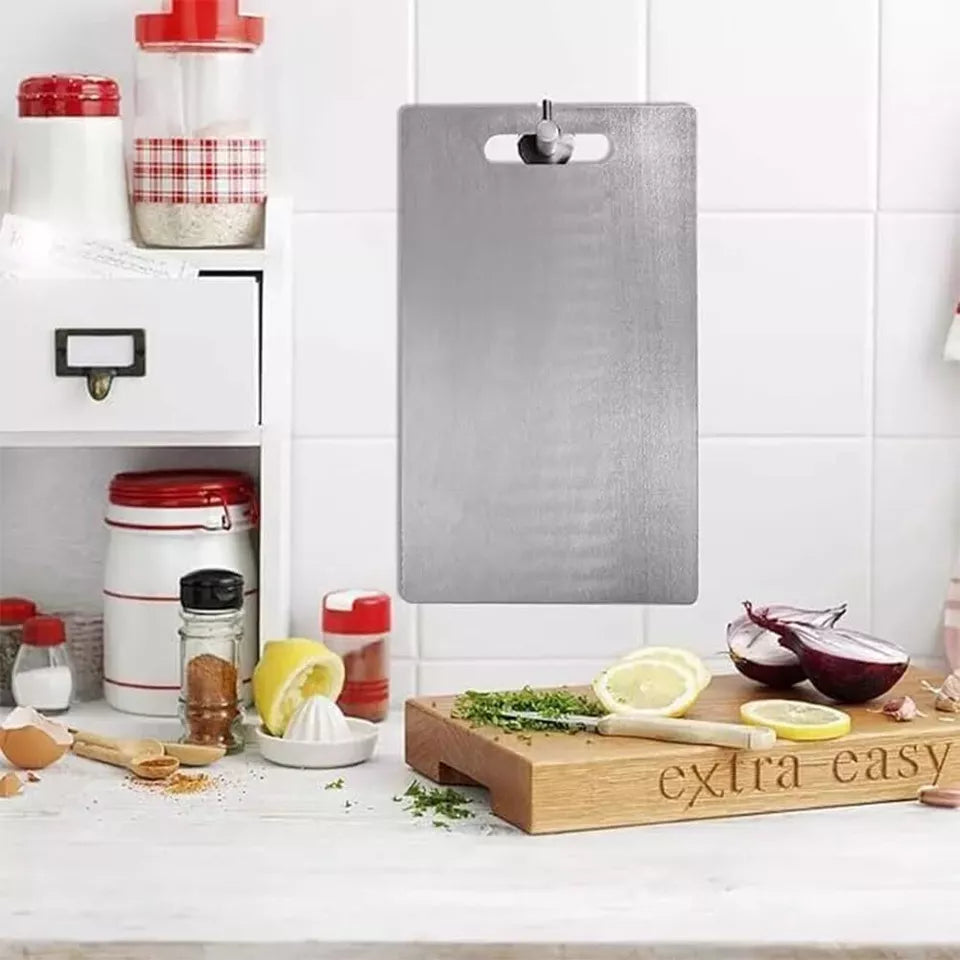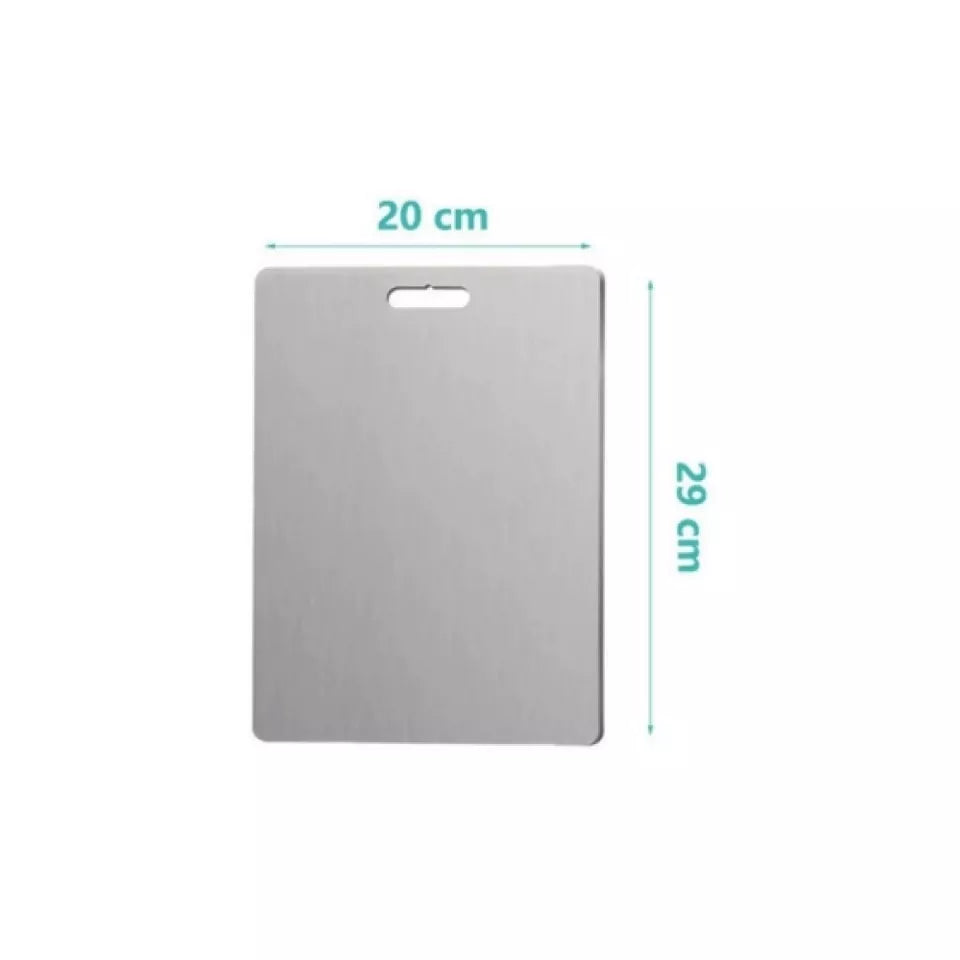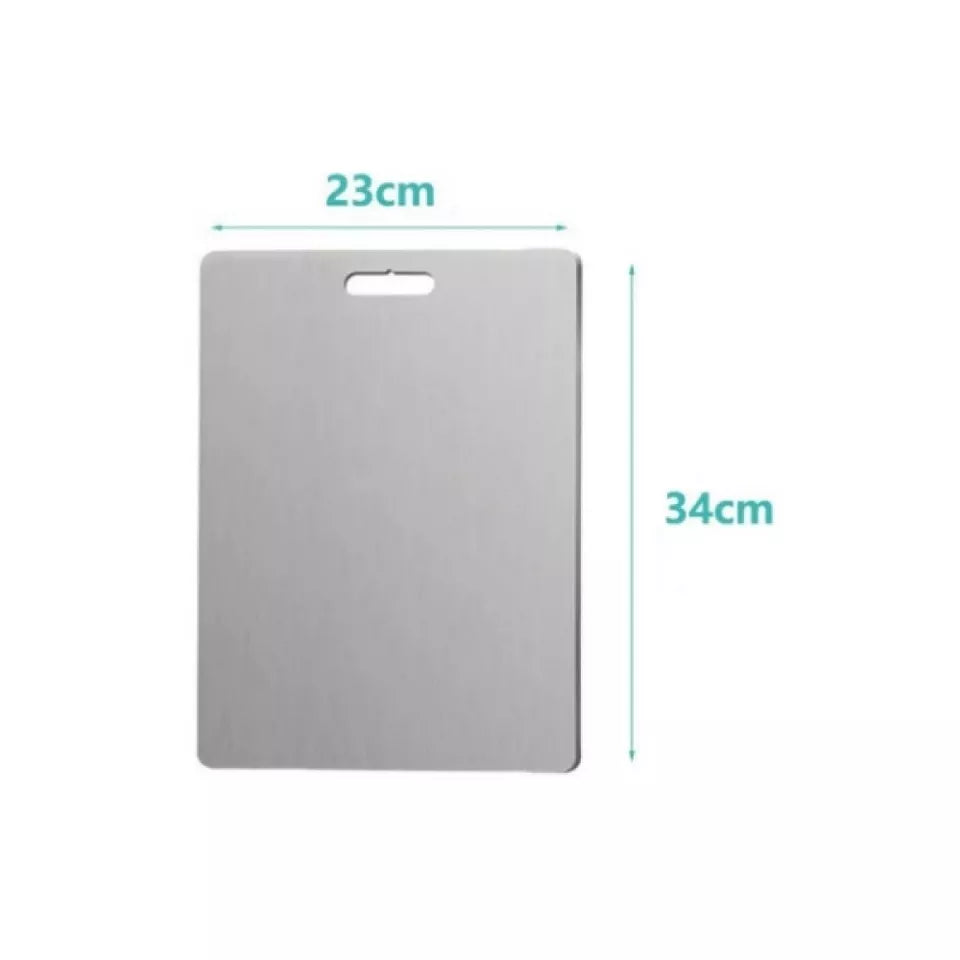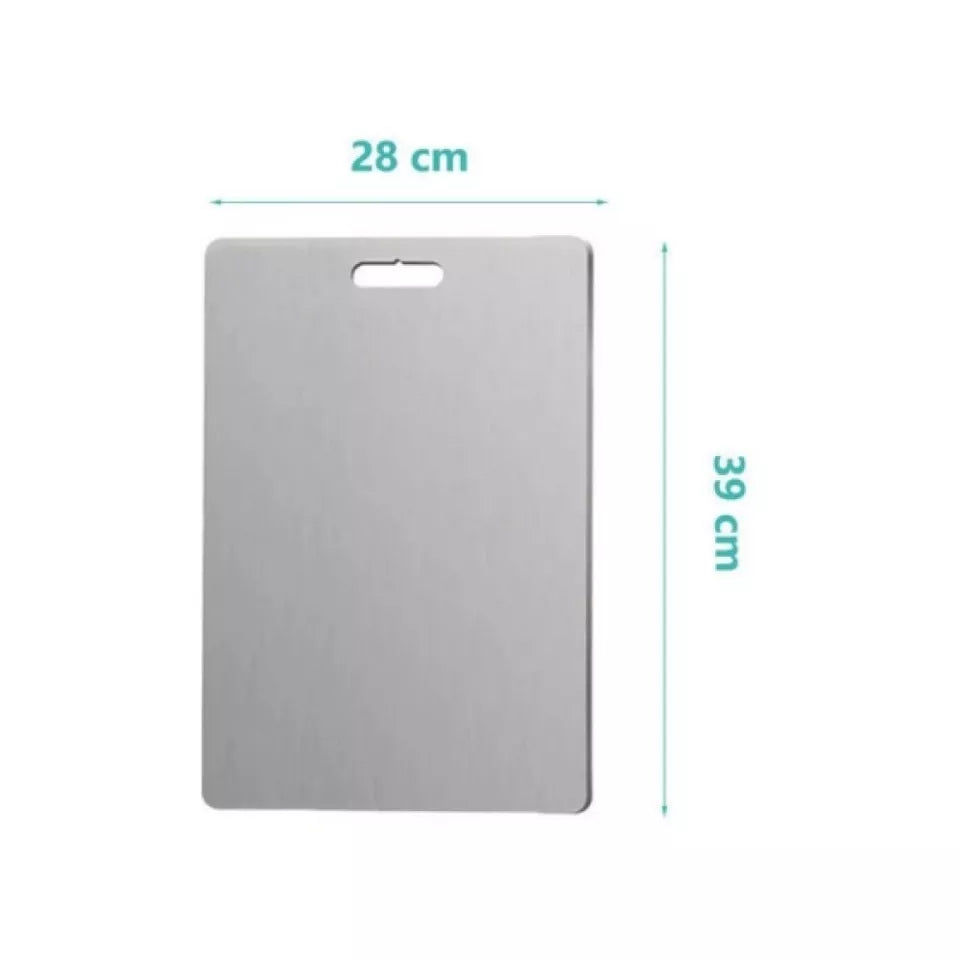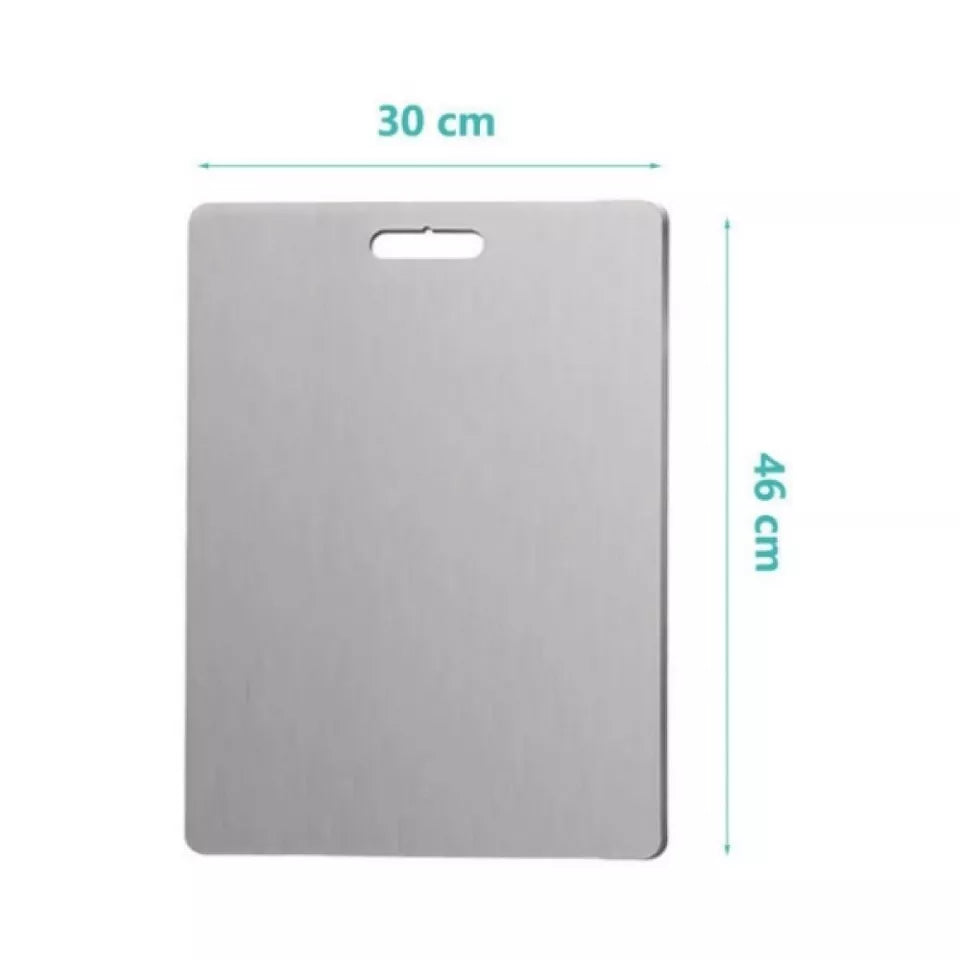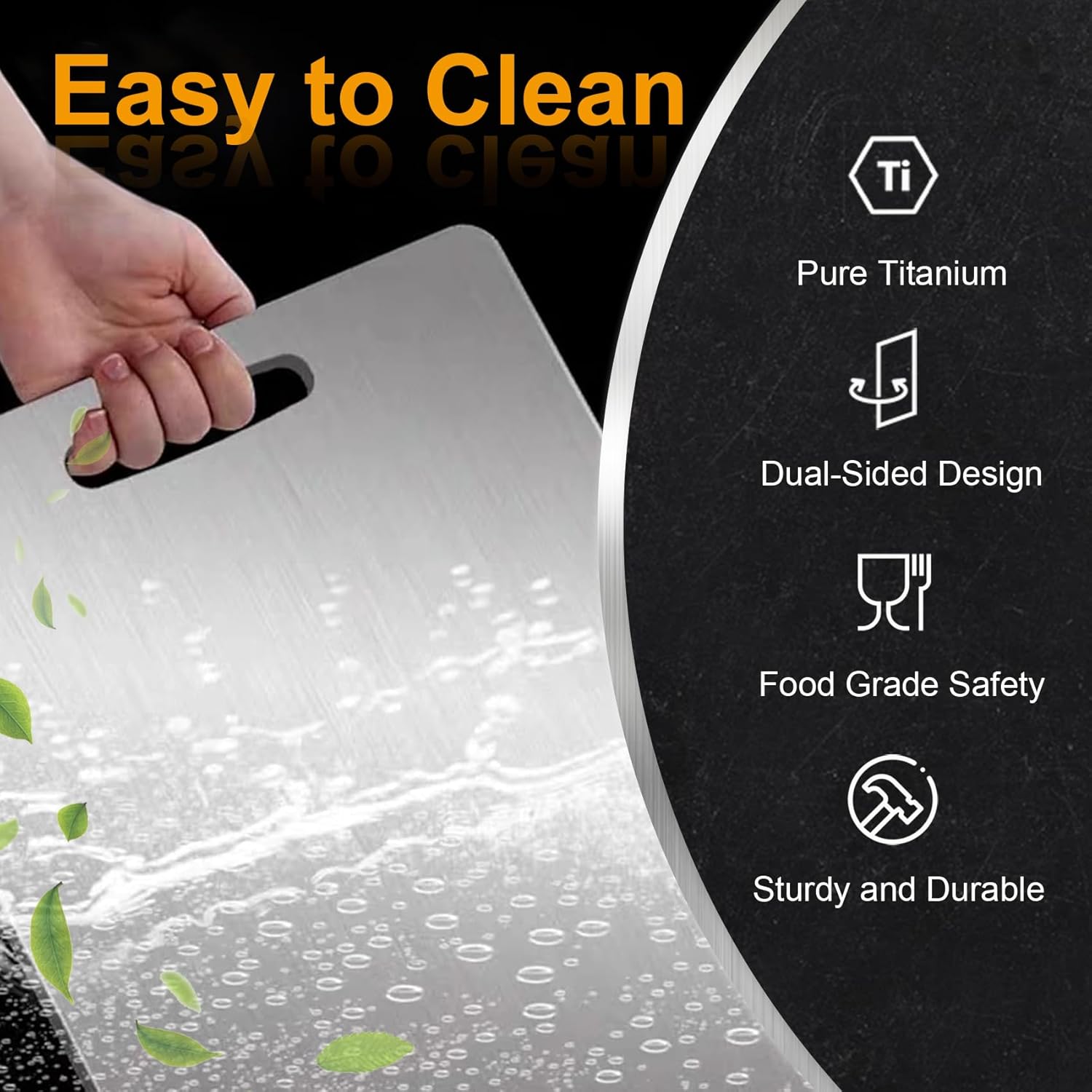Are Titanium Cutting Boards Good? An Expert Analysis
Are titanium cutting boards a good choice for home cooks? Yes, titanium cutting boards are an excellent choice for serious home cooks in the UK or Australia. They’re ultra-durable, hygienic, stain-resistant, and require little maintenance. While more expensive, they last for decades and resist odors, bacteria, and warping—making them ideal for long-term use.
The humble cutting board is perhaps the most frequently used tool in any kitchen, serving as the foundation for nearly all food preparation. While wooden and plastic cutting boards have dominated kitchens for generations, titanium cutting boards have emerged as a modern alternative that promises exceptional durability, superior hygiene, and minimal maintenance. But are titanium cutting boards actually good, or is the hype surrounding these premium kitchen tools overblown?
In this comprehensive analysis, we'll examine titanium cutting boards from every angle—evaluating their performance, practical benefits, limitations, and overall value. By the end of this article, you'll have a clear understanding of whether a titanium cutting board would be a worthwhile addition to your kitchen arsenal.
Understanding Titanium as a Cutting Board Material
Before we can properly assess whether titanium cutting boards are good, it's important to understand what makes titanium unique as a material and how these properties translate to cutting board performance.
The Science Behind Titanium
Titanium is a remarkable metal with several distinctive characteristics:
- Exceptional Strength-to-Weight Ratio: Titanium offers impressive strength while remaining relatively lightweight compared to other metals
- Corrosion Resistance: The material naturally forms a protective oxide layer that makes it highly resistant to corrosion from moisture, acids, and other substances
- Biocompatibility: Titanium is biologically inert and non-toxic, which is why it's commonly used in medical implants
- Moderate Hardness: With a Mohs hardness rating of approximately 6, titanium is hard enough to resist significant damage while being softer than the steel used in quality knives (typically 7-8 on the same scale)
- Low Thermal Conductivity: Compared to other metals, titanium conducts heat relatively poorly, which affects how it feels and performs in kitchen applications
These inherent properties create a foundation for titanium's performance as a cutting board material, influencing everything from durability to knife interaction to hygiene.
How Titanium Cutting Boards Are Made
Most quality titanium cutting boards are manufactured from food-grade titanium sheets with a purity level of 99% or higher. The production process typically involves:
- Material Selection: High-purity titanium sheets of appropriate thickness (usually 0.8-1.2mm) are selected
- Precision Cutting: The sheets are cut to size using laser or water jet technology for clean, precise edges
- Edge Treatment: The edges and corners are rounded through grinding and polishing to eliminate sharp points
- Surface Finishing: The cutting surface receives a specialized treatment to create the optimal texture for knife interaction and food release
- Final Inspection: Each board undergoes quality control to verify dimensions, finish quality, and material integrity
This manufacturing process directly influences the quality and performance of the final product. Premium titanium cutting boards typically feature more refined edge finishing, carefully calibrated surface treatments, and verified material purity, while budget options may compromise on these details.
The Performance Benefits of Titanium Cutting Boards
To determine whether titanium cutting boards are good, we need to evaluate their performance across several key dimensions that matter in everyday kitchen use.
Exceptional Durability and Longevity
Perhaps the most compelling advantage of titanium cutting boards is their extraordinary durability. Unlike wooden boards that can crack, warp, or develop deep grooves over time, or plastic boards that quickly accumulate knife marks and need frequent replacement, titanium boards maintain their integrity through years of daily use.
This exceptional longevity stems from titanium's inherent properties:
- Resistance to Cutting Damage: While not impervious to scratches, titanium's hardness prevents the deep grooves that quickly develop in softer materials
- Dimensional Stability: Titanium doesn't warp, crack, or change dimensions with exposure to moisture or temperature fluctuations
- Impact Resistance: The material can withstand accidental drops that might damage or destroy other cutting board materials
- Corrosion Immunity: Titanium's natural corrosion resistance means it won't degrade from exposure to food acids, cleaning chemicals, or moisture
In practical terms, this durability means a quality titanium cutting board could be the last one you'll ever need to purchase. Many manufacturers confidently offer lifetime warranties, reflecting the material's exceptional longevity. For those who view kitchen tools as long-term investments rather than disposable items, this durability represents significant value despite the higher initial cost.
Superior Hygiene and Food Safety
Food safety concerns have driven many consumers to reconsider their cutting board choices, and titanium excels in this critical area. The non-porous nature of titanium creates a cutting surface that offers significant hygiene advantages:
- Bacterial Resistance: Unlike wooden boards that contain microscopic pores where bacteria can hide and multiply, titanium presents a seamless surface that bacteria cannot penetrate
- Complete Cleanability: The smooth, non-absorbent surface allows for thorough cleaning and sanitization, with no hidden areas where pathogens can remain
- Cross-Contamination Prevention: The material's resistance to cutting damage eliminates the deep grooves that harbor bacteria in other materials, reducing the risk of transferring pathogens between different food items
- Chemical Stability: Titanium doesn't react with food acids or leach any substances into your ingredients, ensuring your food remains uncontaminated during preparation
Laboratory testing confirms these hygiene benefits, with properly cleaned titanium surfaces showing virtually no bacterial retention even after preparing raw meat or poultry. This exceptional hygiene performance eliminates the need for separate boards for different food types, simplifying kitchen workflow and storage requirements.
Minimal Maintenance Requirements
The low-maintenance nature of titanium cutting boards appeals to busy cooks who value convenience. Unlike wooden boards that require regular oiling and careful washing procedures, titanium boards can be quickly cleaned with soap and water or placed in the dishwasher without concern for warping, cracking, or other damage.
This ease of care includes several practical advantages:
- Simple Cleaning: Basic washing with soap and water is typically all that's needed to maintain hygiene
- Dishwasher Safety: Most titanium boards can be safely cleaned in dishwashers without damage
- No Special Treatments: The material requires no oils, conditioners, or special cleaning products to maintain its performance
- Quick Drying: Titanium doesn't absorb moisture, eliminating concerns about proper drying to prevent warping or mold growth
This minimal maintenance translates to significant time savings over the board's lifespan. The cumulative hours spent oiling wooden boards or replacing damaged plastic ones represent a hidden cost that titanium eliminates, adding to its long-term value proposition.
Stain and Odor Resistance
Anyone who has used wooden or plastic cutting boards knows the frustration of lingering odors and stubborn stains from ingredients like garlic, onions, turmeric, or berries. Titanium's non-porous, non-reactive surface doesn't absorb food odors or discolor from contact with strongly pigmented foods.
This resistance keeps your cutting board looking and smelling fresh, even after preparing strongly flavored or colorful ingredients. The aesthetic longevity matches the structural durability, ensuring your titanium cutting board remains an attractive kitchen tool for years to come.
For those who prepare diverse cuisines with aromatic ingredients, this odor resistance is particularly valuable, as it prevents flavor transfer between different dishes and eliminates the need for specialized cleaning to remove persistent smells.
Potential Limitations of Titanium Cutting Boards
A balanced assessment must also consider the potential drawbacks of titanium cutting boards:
Initial Investment Consideration
The most obvious limitation of titanium cutting boards is their premium price point. Quality titanium cutting boards typically range from $80 to $200 depending on size and features—significantly more than basic plastic ($10-30) or mid-range wooden boards ($40-100).
This higher initial cost represents a barrier to entry for many consumers, particularly those on tight budgets or those who cook infrequently. While the long-term value proposition may justify this investment for serious cooks, the upfront expense remains a significant consideration that cannot be overlooked.
It's worth noting that the market also includes lower-priced "titanium" cutting boards that may use titanium coatings or alloys rather than solid titanium construction. These budget alternatives typically don't deliver the full range of benefits associated with high-quality titanium boards and may not offer the same exceptional longevity.
Impact on Knife Edges
One of the most debated aspects of titanium cutting boards is their impact on knife sharpness. While titanium is softer than the steel used in quality knives, it's still harder than traditional cutting board materials like wood or plastic. This hardness difference raises legitimate concerns about potential accelerated dulling of knife edges.
Controlled testing indicates that titanium cutting boards do cause slightly more knife edge wear than end-grain wooden boards (approximately 15-20% faster dulling), but significantly less than glass, granite, or stainless steel surfaces (which caused 300-400% faster dulling).
This places titanium in a middle ground for knife friendliness—not as gentle as premium wooden boards but considerably better than other hard surfaces. For most home cooks who don't sharpen daily, this difference is unlikely to be problematic, especially given the other benefits titanium provides.
However, professional chefs and serious knife enthusiasts who prioritize edge retention above all other factors may find this limitation significant enough to prefer traditional end-grain wooden boards despite their higher maintenance requirements.
Sensory Experience Differences
The cooking experience involves multiple sensory dimensions, and titanium cutting boards create a different sensory experience than traditional materials:
- Sound: Cutting on titanium produces more noise than cutting on wood or plastic. The metallic sound can be noticeable, especially during vigorous chopping
- Feel: The harder surface provides different tactile feedback during cutting, which some users find less satisfying than the slight give of wooden boards
- Temperature: Titanium can feel cool to the touch initially, though this sensation typically diminishes during use
- Visual Aesthetic: The modern, metallic appearance differs significantly from the warm, natural look of wooden boards
These sensory differences are largely subjective and may be perceived positively or negatively depending on individual preferences. Some users appreciate the clean, modern aesthetic and distinctive cutting feel, while others prefer the traditional sensory experience of wooden boards.
Real-World Performance: How Titanium Cutting Boards Actually Perform
Moving beyond theoretical advantages and limitations, let's examine how titanium cutting boards perform in real-world kitchen use across different scenarios:
Everyday Food Preparation
For routine cooking tasks like chopping vegetables, slicing fruits, or preparing herbs, titanium cutting boards perform exceptionally well. The stable, flat surface provides an excellent foundation for precise cutting, while the non-porous nature prevents juices from being absorbed into the board.
The board's weight provides good stability during cutting, though some users may want to place a thin silicone mat underneath to prevent potential sliding on smooth countertops. The surface texture of quality titanium boards strikes a balance between providing enough grip to prevent food from sliding while still allowing for smooth knife movement.
Clean-up after these tasks is remarkably simple—a quick wash with soap and water removes all residue without the need for scrubbing or special cleaning techniques. This ease of maintenance is particularly valuable for busy weeknight cooking when convenience matters.
Raw Meat and Seafood Preparation
When working with raw proteins like chicken, beef, or fish, titanium cutting boards truly excel. The non-porous surface eliminates concerns about bacterial contamination, while the smooth surface makes thorough cleaning and sanitization simple and effective.
Unlike wooden boards that can develop persistent odors from fish or become stained from meat juices, titanium remains completely unaffected by these challenging ingredients. This resistance to odor absorption is particularly valuable when preparing strongly flavored proteins like game meats or oily fish.
The ability to fully sanitize the board—either with chemical sanitizers or in the dishwasher—provides peace of mind when handling potentially hazardous raw foods. This hygiene advantage alone makes titanium cutting boards worth considering for many health-conscious cooks.
Acidic and Strongly Pigmented Foods
Ingredients like citrus fruits, tomatoes, berries, and turmeric present challenges for many cutting board materials. Wooden boards can be damaged by prolonged exposure to acids, while both wood and plastic can become permanently stained by pigmented foods.
Titanium cutting boards handle these challenging ingredients with ease. The chemically inert surface doesn't react with food acids, while the non-porous nature prevents pigment absorption. You can cut beets, turmeric, or berries without concern for staining, and work with citrus or tomatoes without worrying about material damage.
This versatility eliminates the need for separate boards for different ingredients, simplifying kitchen workflow and storage requirements. Being able to use a single board for all preparation tasks represents a significant practical advantage in everyday cooking.
Long-Term Performance and Aging
Perhaps the most impressive aspect of titanium cutting boards is their long-term performance. While wooden boards develop deeper knife marks over time and plastic boards eventually need replacement due to accumulated grooves, titanium boards maintain their functional integrity through years of regular use.
The surface may develop fine scratches with extended use, but these are typically superficial and don't affect the board's hygienic properties or cutting performance. Unlike the deep grooves that develop in softer materials, these minor marks don't harbor bacteria or affect the board's cleanability.
Many titanium cutting board owners report using their boards daily for 5+ years with minimal signs of wear, supporting manufacturers' claims about exceptional longevity. This durability makes titanium boards particularly valuable for those who cook frequently and want to invest in quality tools that don't require replacement.
Comparing Titanium to Alternative Cutting Board Materials
To fully assess whether titanium cutting boards are good, it's helpful to compare them directly with other popular cutting board materials:
Titanium vs. End-Grain Wood
End-grain wooden cutting boards (particularly those made from hard maple, walnut, or cherry) represent the traditional premium option for serious cooks:
| Feature | Titanium | End-Grain Wood |
|---|---|---|
| Knife Edge Preservation | Good; minimal dulling with proper technique | Excellent; self-healing surface minimizes dulling |
| Hygiene | Excellent; non-porous and fully sanitizable | Good; natural antimicrobial properties but porous |
| Maintenance Requirements | Minimal; simple washing with no special care | High; requires regular oiling and careful washing |
| Durability | Exceptional; virtually indestructible | Good; durable but susceptible to cracking and warping |
| Aesthetic Aging | Maintains appearance with minimal change | Develops patina and character over time |
| Typical Price Range | $80-200 | $80-250 |
The choice between these premium options often comes down to personal priorities—those who prioritize knife edge preservation and traditional aesthetics might prefer wood, while those valuing hygiene, durability, and low maintenance typically prefer titanium.
Titanium vs. Plastic/Composite
Plastic and composite cutting boards represent the most common option in many kitchens due to their accessibility and convenience:
| Feature | Titanium | Plastic/Composite |
|---|---|---|
| Initial Cost | High; significant investment | Low; very accessible |
| Longevity | Decades with normal use | 6-18 months before significant grooving |
| Hygiene Over Time | Maintains hygienic surface indefinitely | Decreases as knife grooves develop |
| Knife Impact | Moderate; slightly faster dulling than wood | Mild to moderate depending on material hardness |
| Environmental Impact | High initial impact but extremely long lifespan | Lower initial impact but creates plastic waste with frequent replacement |
While plastic boards offer a much lower entry price, their shorter lifespan means the long-term cost comparison favors titanium for those who cook frequently. The hygiene advantage of titanium becomes particularly significant over time as plastic boards develop knife grooves that harbor bacteria.
Titanium vs. Bamboo
Bamboo cutting boards have gained popularity as an eco-friendly alternative to traditional hardwoods:

Bamboo offers a middle ground between plastic and premium options in terms of both price and performance. However, titanium provides significantly better longevity and hygiene, particularly in humid environments where bamboo can be susceptible to mold growth if not properly maintained.
Who Should Consider Titanium Cutting Boards?
Based on their performance characteristics, titanium cutting boards are particularly well-suited for certain types of users:
Ideal Candidates for Titanium Cutting Boards
- Serious home cooks who prepare meals daily and value durability and low maintenance
- Health-conscious users concerned about bacterial cross-contamination and food safety
- Those with limited kitchen space who need one versatile board instead of multiple specialized ones
- Cooks who frequently work with acidic or strongly flavored ingredients and want to avoid odor absorption
- People seeking a long-term investment who appreciate quality tools that don't require replacement
- Those with busy lifestyles who value time-saving convenience in kitchen maintenance
Less Ideal Candidates
Titanium cutting boards may be less suitable for:
- Professional chefs or knife enthusiasts who prioritize knife edge preservation above all other factors
- Those on tight budgets who cannot justify the initial investment
- Traditionalists who strongly prefer the feel and aesthetic of wood and are willing to accept the higher maintenance requirements
- Occasional cooks who use cutting boards infrequently and may not realize sufficient benefit to justify the premium cost
Maximizing Your Experience with Titanium Cutting Boards
If you decide that a titanium cutting board is right for your kitchen, these practices will help you maximize its advantages while minimizing potential drawbacks:
Optimal Cutting Techniques
To reduce potential impact on knife edges and minimize noise during use:
- Use sliding or rolling cuts rather than straight chopping motions when possible
- Let the knife's sharpness do the work rather than applying excessive downward pressure
- Utilize the full board surface, regularly changing your cutting position to prevent localized wear patterns
- Consider using slightly softer knives (58-60 HRC) rather than ultra-hard Japanese blades (63+ HRC) for everyday tasks
Care and Maintenance Best Practices
While titanium requires minimal maintenance, these practices will help preserve its appearance and performance:
- Wash with warm water and mild dish soap after each use; avoid abrasive cleaners or scrubbers that might affect the surface finish
- For sanitizing after preparing raw meat, use diluted bleach solution (1 tablespoon per gallon of water), hydrogen peroxide, or commercial food-safe sanitizers
- Store in a vertical position when possible to allow complete drying and prevent potential scratches from stacking with other kitchen tools
- Use plastic or silicone tools rather than metal implements to transfer chopped ingredients, reducing the risk of surface scratches
Enhancing Stability and Reducing Noise
Simple additions can address two common concerns with titanium cutting boards:
- Place a thin silicone mat underneath the board to dampen sound during vigorous chopping and enhance stability
- Ensure your countertop is completely dry before placing the board to prevent hydroplaning
- For boards without built-in stabilizing features, a damp kitchen towel underneath can provide excellent grip
- Position the board away from counter edges to ensure complete support during cutting tasks
Frequently Asked Questions About Titanium Cutting Boards
Are titanium cutting boards really worth the higher cost?
For many users, the long-term value of titanium cutting boards justifies their higher initial cost. When you consider that a quality titanium board can last decades without degradation, compared to replacing wooden or plastic boards every few years, the lifetime cost often favors titanium. Additionally, the performance benefits—including superior hygiene, minimal maintenance, and resistance to staining and odors—add significant value beyond mere longevity.
Will a titanium cutting board really damage my knives?
Quality titanium cutting boards are designed to minimize impact on knife edges. While they may cause slightly faster dulling than premium wooden boards (approximately 15-20% in controlled testing), this effect is significantly less than with glass, granite, or stainless steel surfaces. For most home cooks who don't sharpen daily, this difference is unlikely to be problematic, especially when using proper cutting techniques that emphasize sliding or rolling motions rather than straight chopping.
Can titanium cutting boards harbor bacteria like wooden or plastic boards?
No, titanium cutting boards are significantly less likely to harbor bacteria than wooden or plastic alternatives. Their non-porous nature prevents bacterial penetration, while their resistance to cutting damage eliminates the grooves where pathogens can hide. Laboratory testing confirms that properly cleaned titanium surfaces show virtually no bacterial retention, even after preparing raw meat or poultry.
Are there any foods I shouldn't prepare on a titanium cutting board?
Titanium cutting boards are suitable for preparing virtually all foods, including those that might damage or stain other materials. Acidic ingredients like tomatoes, citrus, and vinegar; strongly pigmented foods like berries and turmeric; and proteins like raw meat and fish can all be safely prepared on titanium surfaces without concern for material damage or contamination.
How can I tell if I'm getting a genuine titanium cutting board?
To ensure you're purchasing a genuine titanium cutting board rather than a titanium-coated alternative:
- Look for specific information about titanium purity (99% or higher is ideal)
- Check for proper food-grade certification and testing documentation
- Verify the weight—titanium is lighter than steel but heavier than aluminum
- Research the manufacturer's reputation and production methods
- Be wary of prices that seem too good to be true; quality titanium boards represent a significant investment
Conclusion: Are Titanium Cutting Boards Good?
After comprehensive analysis of their performance, benefits, and limitations, titanium cutting boards emerge as excellent options for many kitchen scenarios. Their exceptional durability, superior hygiene, and minimal maintenance requirements address many limitations of traditional materials, while their versatility adds significant practical value for serious cooks.
However, they're not necessarily the perfect choice for everyone. The significant initial investment, potential impact on knife edges, and different sensory experience compared to traditional materials may make them less suitable for certain users or situations.
The answer to whether titanium cutting boards are good ultimately depends on your specific cooking habits, preferences, and priorities:
- If you value long-term durability, minimal maintenance, and superior hygiene, titanium cutting boards are excellent choices that will likely serve you well for decades
- If you prioritize knife edge preservation above all other factors or strongly prefer the traditional feel and aesthetic of wood, you might find other premium options more satisfying despite their higher maintenance requirements
- If budget is your primary concern, the significant initial investment may be difficult to justify despite the long-term value proposition
For most serious home cooks who prepare meals regularly and appreciate quality kitchen tools, titanium cutting boards represent a worthwhile investment that combines practical performance with exceptional longevity. Their ability to handle all ingredients without concern for staining, odor absorption, or bacterial contamination simplifies kitchen workflow while providing peace of mind regarding food safety.
The premium price becomes more reasonable when viewed as an investment in a superior cooking experience that will deliver benefits for decades to come—potentially making a titanium cutting board the last board you'll ever need to purchase.
Use code BLOG20 to save 20% today on our premium hygienic chopping boards, with free shipping Australia-wide. [Shop Hygienic Chopping Boards ➜]
FAQs About Titanium Cutting Boards
Q1: Are titanium cutting boards better than wooden or plastic ones?
A: Yes, titanium cutting boards offer superior hygiene, durability, and stain resistance. They outlast wood and plastic, don’t warp, and are dishwasher safe—making them a long-term, low-maintenance investment.
Q2: Do titanium cutting boards dull knives quickly?
A: Titanium cutting boards may cause knives to dull slightly faster than wood, but much less than glass or steel surfaces. With proper technique, most home users won’t notice significant dulling.
Q3: Are titanium cutting boards safe for food prep?
A: Absolutely. Titanium is non-porous, corrosion-resistant, and biologically inert. It doesn't absorb bacteria or odors and is ideal for safely preparing meat, fish, or acidic foods.
Q4: How long do titanium cutting boards last?
A: A high-quality titanium cutting board can last for decades—even a lifetime—with regular use. Unlike plastic or wood, it won’t crack, warp, or degrade over time.
Q5: Are titanium cutting boards worth the high price?
A: For frequent cooks, yes. While the initial cost is higher, the long-term value, hygiene benefits, and maintenance-free design make titanium boards a smart investment over time.
For further information please refer to:
Titanium Cutting Boards Australia: The Ultimate Guide to Premium Kitchen Surfaces






